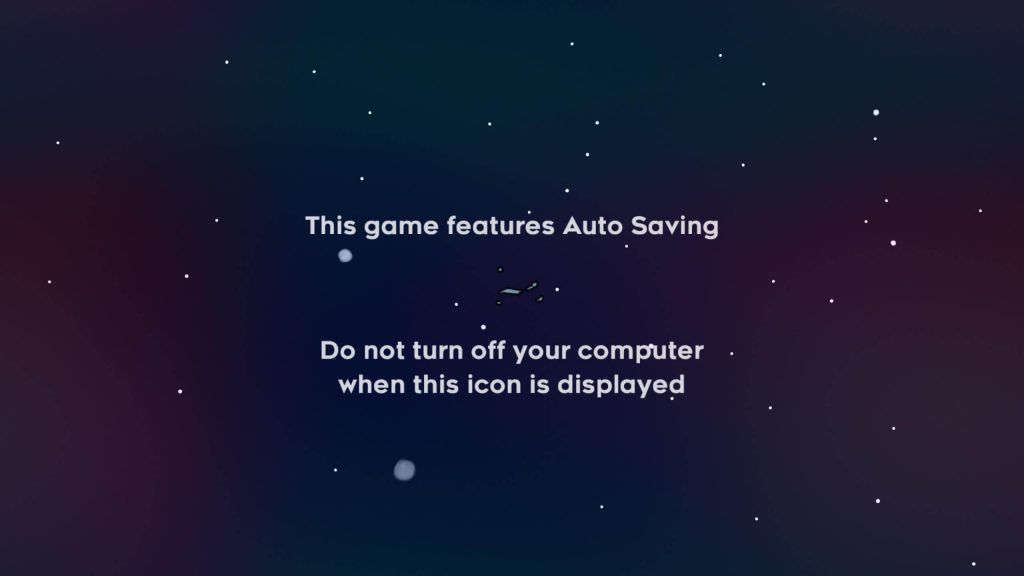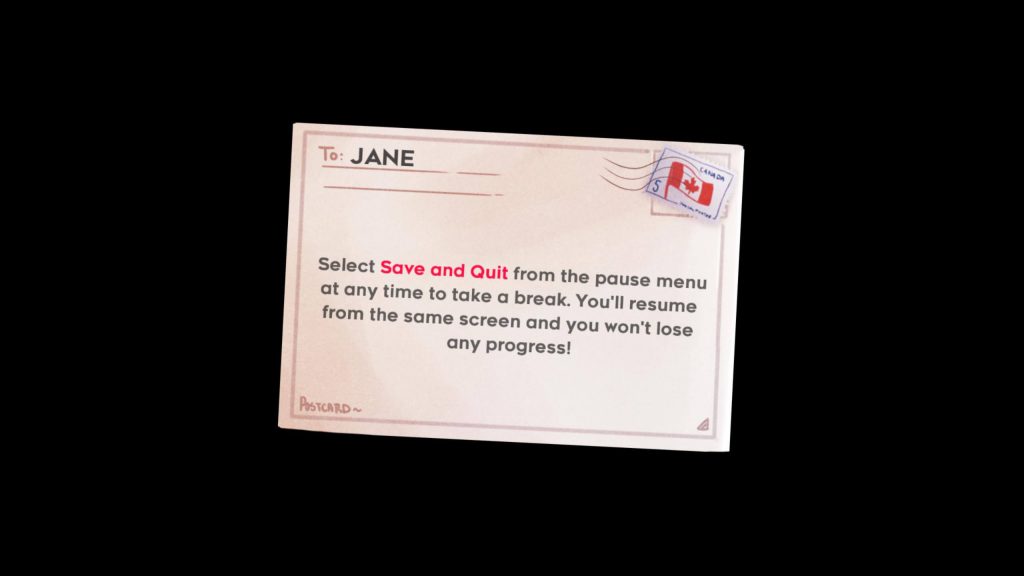Allow Players to Save Their Progress
On this page
Allowing players to save their game progression is extremely beneficial for those who wish to avoid losing their progress. This can be achieved either by enabling the game to save the game state automatically or by allowing players to perform manual saves. Some players prefer manual saving, others prefer automatic saving, and some desire both. If time and resources permit, it is advisable to implement both methods, thereby granting players the freedom to save the game whenever they choose. Additionally, automatic saving should be incorporated, as players may forget to save their game state regularly. Once the game state is saved, it is essential to inform the player that the save has occurred. This can be achieved through text or animations. Ensure that players are clearly aware of when the game is being saved.
In Sniper Elite 4, when the main menu is loading, players can see a red icon accompanied by a description in the top right corner, indicating that the game content is being saved.
Credit: Rebellion Developments. Screenshot captured by the author.
In Celeste, a message appears after launching the game, informing players about the Auto Save feature.
Credit: Extremely OK Games. Screenshot captured by the author.
After completing the first level in Celeste, players are also notified about the option to save the game state and exit the game.
Credit: Extremely OK Games. Screenshot captured by the author.
If your game does not save progress when returning to the main menu or upon quitting, be sure to inform players that any unsaved progress will be lost if they proceed.
Manual Saving
Allow players to save their progress manually at any time during gameplay. Even if your game supports autosaving, manual saving remains valuable, particularly for players who do not wish to lose progress made after the last checkpoint where an autosave occurred.
Consider a scenario in which a game saves automatically when players enter a level for the first time and does not save again until a distant checkpoint is reached. Players may spend significant time—perhaps twenty minutes—fighting enemies, collecting rewards, or solving puzzles. If they fail to reach the next checkpoint, they may feel as though their efforts were in vain, leading to frustration.
Another example is when players must exit the game abruptly for unforeseen reasons. If the game does not save the state upon exiting, progress may be lost, causing dissatisfaction.
Although unrestricted manual saving might seem to reduce the overall challenge and allow for continual favorable game states, the advantages of manual saving—such as preserving significant progress—generally outweigh the drawbacks.
Using a Menu
When players save their game using a menu, it is helpful to allow them to assign a custom name to the saved file. The game may either leave the title field blank or pre-fill it with a unique identifier. Automatically generating a filename is useful for players who prefer not to enter a name manually, as they can simply confirm the save. Ultimately, it is your decision whether the game should suggest a filename before saving the game state manually.
In Frostpunk, when players select the “Save Game” option during gameplay and choose to save the game state as a new file, the game pre-fills the text field with a default string. Players then have the option to retain the filename or modify it.
Credit: 11 bit studios S.A.. Footage captured by the author.
If a player attempts to save a file using an existing name, the game should alert them and provide the option either to overwrite the existing file or to choose a different name. Players should be able to save and retain multiple manually saved game states.
Using a Single Keystroke (Quick Saving)
Invoking a menu to save the game can disrupt the player’s immersion and gameplay flow. Therefore, it is beneficial to allow players to save the game using a single keystroke, also known as quick saving.
Additionally, players should be allowed to retain at least a few quick save files. This is particularly important in scenarios where a player saves just before failing an objective. In such cases, they should be able to revert to a previous autosave or a manually saved game state rather than being stuck with the most recent save.
Using Save Points
Save points are specific physical locations within the game world where players must go to save their game state. Increasing the number of save points can make the game more accessible. However, if save points are implemented, the option to quick save using a single keystroke should be disabled, as it would render the save points redundant.
Autosaving
Well-Timed Autosaving
Players can benefit significantly from well-timed autosaving when it is implemented under the following conditions:
Near important locations (checkpoints) within levels in the game: This is beneficial because it allows players to return to these locations if they wish to do so.
Upon entering a different area or level within the game: This is helpful for players who may wish to revisit that point in time and take a different course of action, particularly in cases where they were unable or simply forgot to use the quick save feature.
Upon completing the current level: This is useful for players who intend to replay that level at a later time.
In Sniper Elite 4, once a player completes a campaign mission, it becomes available for replay directly from the main menu.
Credit: Rebellion Developments. Footage captured by the author.
Immediately before and after the completion of important or difficult tasks: If such a task is composed of multiple sub-tasks, autosaves should also be performed between those sub-tasks to prevent players from having to repeat lengthy sections. This is particularly valuable when players have either been unable or have forgotten to manually save their progress, thereby ensuring they do not need to repeat previous tasks.
Example:
The game should automatically save the game state after a successful boss fight so that, in the event of failure later in the level, the player is not forced to repeat the same battle.
Immediately following a cutscene that precedes a difficult task: When players are required to complete a challenging objective that is introduced by a cutscene, they should not be forced to rewatch the same cutscene every time they reload from an autosave. Doing so would merely waste time and cause unnecessary frustration.
Example:
If a boss fight is preceded by a cutscene, players should only be required to view it once. If they fail the boss fight, the game should load directly at the start of the battle rather than replaying the introductory cutscene.
During prolonged, difficult gameplay sequences: The game can monitor the player’s actions and trigger autosaves when players spend a substantial amount of time on difficult activities such as sneaking, hiding, escaping, or defending—especially when the task has not yet been completed. This feature proves helpful if players fail to complete the objective and have not manually saved, which could otherwise result in a significant loss of progress.
Example:
If players must traverse a large map, the game should autosave at multiple points along the journey to reduce the likelihood that players will need to replay a substantial portion of gameplay.
- Upon receiving a reward: This ensures that rewards, once obtained, are not lost even if the player fails an objective or quits the game.
Example:
In an action game, if players discover a new upgrade for their weapon, the game should automatically save the state so that the upgrade is retained without requiring the player to replay the segment to obtain it again.
Upon exiting the game: This ensures that players are not required to remember to manually save their progress before quitting the game.
At regular time intervals: This feature can be useful for players who may want to revisit earlier moments in the game to make different decisions, especially if they forgot or were unable to use the quick save option. If this feature is implemented, players should be given the ability to configure the autosave interval according to their preferences.
In Evil Genius 2: World Domination, it is possible to modify the autosave interval by selecting from a set of predefined values.
Credit: Rebellion Developments. Screenshot captured by the author.
Badly-Timed Autosaving
Poorly-timed autosaving can lead to frustration for players when implemented under the following circumstances:
When performed too frequently, leading to a diminished sense of consequence: This may also occur when players use the manual quick save feature excessively.
During intense action sequences, where players are more likely to die, lose significant progress, or fail to accomplish their objective.
Example:
In an action game, the player’s character might come under heavy fire, and the game could perform an autosave. Within a second or two, the character is killed. Upon reloading the most recent autosave, the player is again placed into the same deadly scenario, resulting in a continuous loop of failure. The only viable solution would be to load an older, less recent saved game state.
Example:
An autosave is triggered moments before the countdown for a challenge expires, offering no opportunity for corrective action.
When executed far from the player’s intended destination: If players fail to reach the next checkpoint and either forget or are unable to save manually, a significant amount of progress may be lost.
Example:
In a role-playing game where manual saving is not permitted, players might be required to travel from one island to another, a journey that takes approximately fifteen minutes. The game would save the state upon departure from the first island but not again until arrival at a distant destination. Should the player’s character be killed near the end of this journey—perhaps by a random shot from an enemy NPC—the player would be forced to repeat the entire trek, likely resulting in considerable frustration.
During playtesting, if it becomes evident that players are losing substantial progress between checkpoints, it is advisable to evaluate whether additional autosaves can be introduced between those points.
Cost of Manual Saving
When players save the game state manually, there may or may not be associated consequences. If implemented, these consequences can introduce an additional layer of difficulty. Such costs might involve the expenditure of valuable in-game resources, such as:
In-game currency.
A limited number of available save slots.
One attempt from a finite number of manual saves permitted per level.




